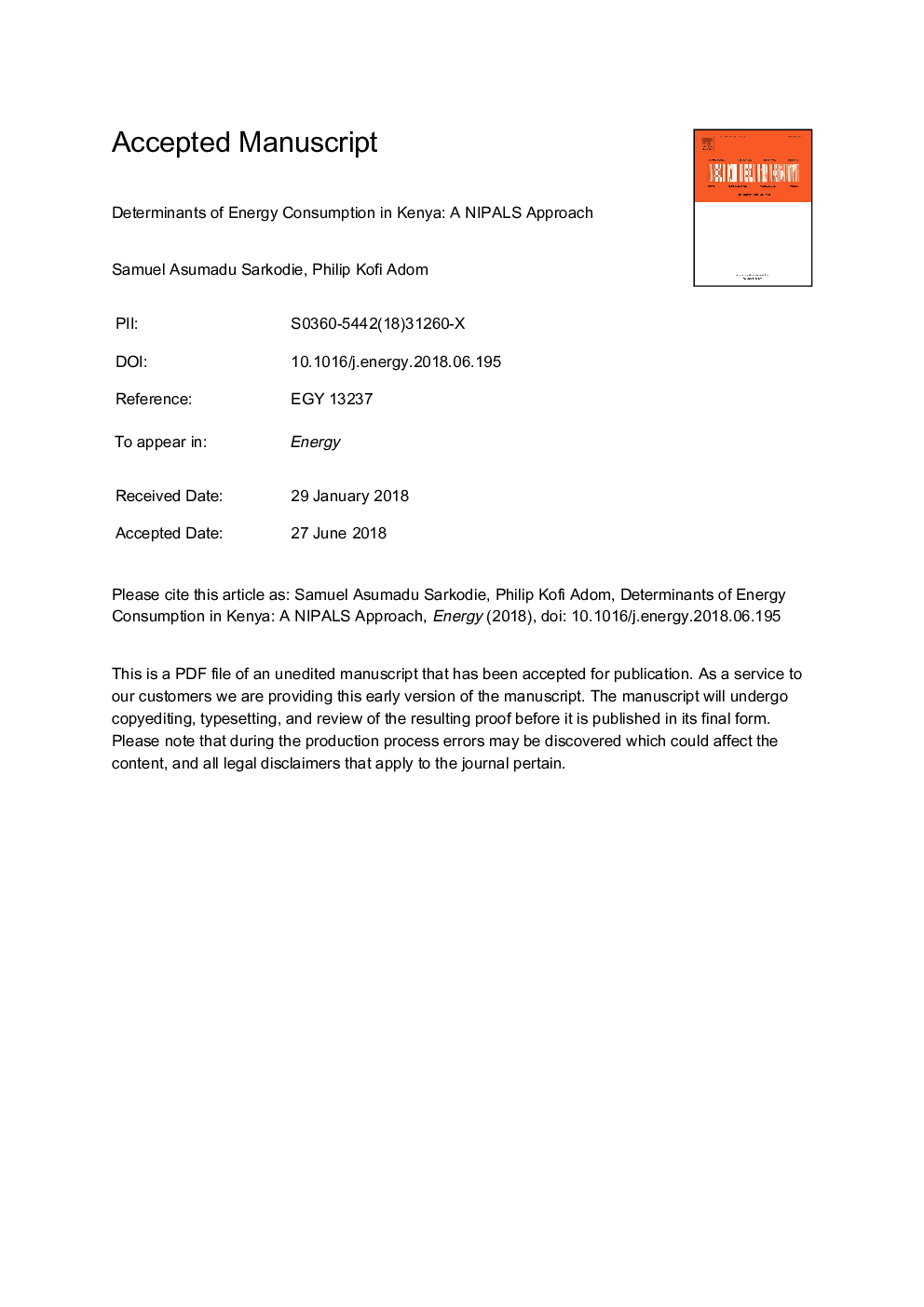| Article ID | Journal | Published Year | Pages | File Type |
|---|---|---|---|---|
| 8071086 | Energy | 2018 | 33 Pages |
Abstract
This study examines the drivers of aggregate energy consumption, fossil fuel and electricity consumption in Kenya using the nonlinear iterative partial least squares (NIPALS) method. The results show the importance of price, population density, urbanization, and renewable energies from hydro sources in promoting energy demand reductions. On the contrary, higher income and climate change are likely to cause a backfire in energy consumption. Though population growth increases the consumption of other energy types, it shows opposite effect on electricity consumption, which is possibly explained as a substitution to other energy types in the presence of a fragile electrical system. These results have important implications for the design of energy conservation and efficiency policies in Kenya.
Related Topics
Physical Sciences and Engineering
Energy
Energy (General)
Authors
Samuel Asumadu Sarkodie, Philip Kofi Adom,
